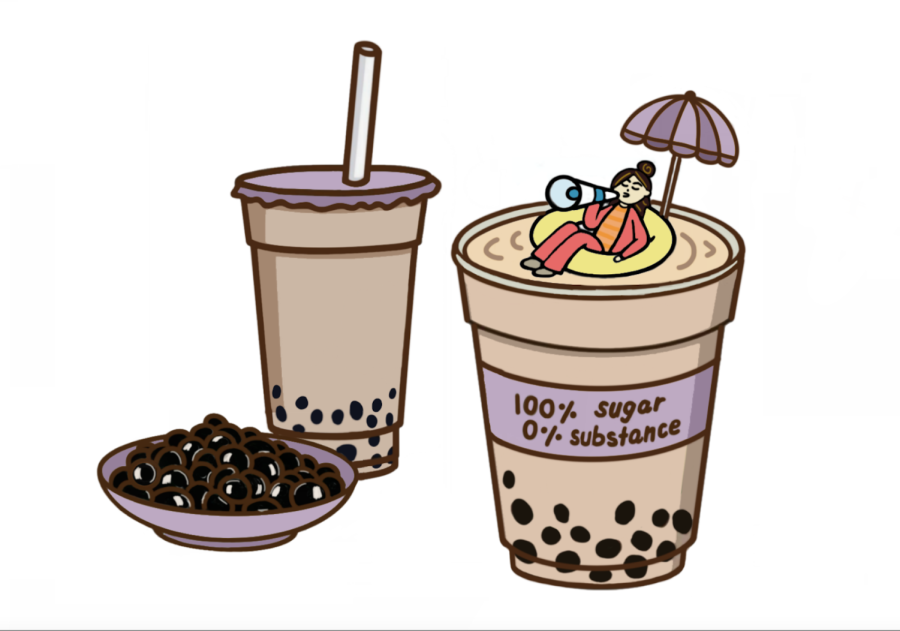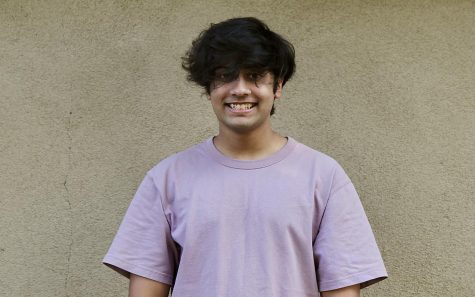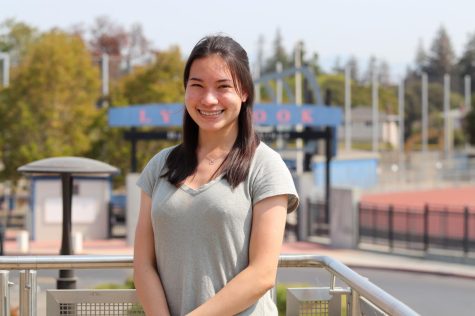The rise and fall of “boba liberalism”
Graphic Illustration by Emma Constable
“Boba liberals” are criticized for celebrating the trendy, marketable aspects of their culture yet failing to address genuine issues plaguing the Asian American community. In other words, their activism is sweet but harmful in the long run.
April 21, 2021
In the wake of recent xenophobic attacks on Asian Americans, the Stop Asian Hate movement has gained significant traction across the country, with the focus shifting toward Asian activists regarding stopping the spread of violence. However, the coronavirus pandemic has inflamed not only hate crimes, but also criticism within the Asian community itself — many disapprove of other Asian Americans who focus on the shallower hallmarks of their culture and fail to demonstrate meaningful advocacy. In the past, this surface-level “activism” has been viewed as nothing more than a way to further assimilate Asians with white Americans and has given birth to a name dripping with disdain: “boba liberalism.” Yet as hate crimes spurred by the pandemic spiral out of control, former “boba liberals” have begun to reconsider what it means to be an effective activist for the Asian American community.
The term “boba liberalism” was first coined by Twitter user @diaspora_is_red as “a type of mainstream liberal Asian American politics” that tends to value assimilation with white culture over authentic solidarity with one’s ethnic roots. The boba liberal stereotype is primarily attributed to upper-middle-class East Asians who proudly identify with their heritage, yet fail to address prominent issues within the Asian community that do not directly affect them. Therefore, while boba liberalism confers a sense of pride and kinship with other Asian Americans, it is a painfully shallow display of solidarity. As Asian pop culture becomes increasingly popular in mainstream American media, the general consensus among boba liberals is that being Asian is suddenly “cool” to whites; as a result, boba liberalism has come to be more of a mechanism of integration into white American culture and a way of presenting oneself in order to be better liked.
“The idea that [Asians] are out-whiting the whites is still perpetuated within the Asian community today,” Asian Studies professor James Lai said. “Because of how the Asian American community was formed in America — through immigration policies that favored affluent, highly educated candidates — the perception that Asian-Americans are honorary whites or that they need to prove themselves as such remains somewhat prevalent.”
In particular, boba liberalism revolves around the distinguishable, materialistic and “white-friendly” aspects of Asian culture. The concept of being Asian or supporting the culture has become somewhat of a trend among boba liberals; many have reported being able to connect with other Asian Americans over hot commodities like K-pop group BTS, Pho, “Crazy Rich Asians” and of course, boba. The Facebook group “subtle asian traits,” started by a group of Asian Australian students to share jokes and memes about their experiences with their Asian culture, has gained nearly a million followers all around the world coming together to joke about having tiger parents or rave about the sanctity of bubble milk tea. As Asian culture has gained massive popularity among all Americans, embracing its trendy and marketable aspects has become an easy way for many Asian Americans to celebrate their heritage.
“I commonly see Asian Americans rallying around [K-pop, boba, ramen, etc.] as a way to show pride for their culture,” said Judy Zeng, former Lynbrook student and current junior at Kehillah High School in Palo Alto. “Although these aspects are ultimately limited and don’t fully represent the cultural depth of Asian heritage, I think they’re helpful as a rallying point for the Asian community and even a starting point to learn more about Asian culture.”
However, while critics of boba liberalism do not condemn those who like the popular milk tea drink or who want to identify with others through shared experiences, they argue that boba liberals claiming to be Asian American activists ultimately fail to address the real, deeply-rooted problems that are as much a part of their cultural identity. Rather than acknowledge and spread awareness of genuine issues within the vast Asian American community, boba liberals tend to focus on more surface-level matters like Asian representation in Hollywood and debates over whether a certain clothing or accessory choice — such as wearing chopsticks in one’s hair — is considered cultural appropriation.
These issues do have relevance when considering equity in American society as a whole, but they pale in comparison to problems like globalization, racial injustice and the significant achievement gap between South-East Asians and East-Asians. Furthermore, boba liberals’ near-obsession with Hollywood representation is itself ironic since Asian casts do not necessarily represent the Asian community. The cast of “Crazy Rich Asians,” for example, is primarily East-Asian, not to mention the plot of the movie literally detailing the lives of wealthy Asians. The irony of such alleged activism once again puts the classism of boba liberals on display.
Like the chewy tapioca pearls for which they are named, boba liberals are shamed for being “all sugar and no substance.” They appear to stand in solidarity with all aspects of their culture yet disregard the major issues plaguing their community. Essentially, their activism is sweet but harmful in the long run.
During the COVID-19 pandemic, however, many boba liberals are now coming to understand just how detrimental this ideology can be. Due to the pandemic causing an unprecedented spike in East Asian hate crimes, many boba liberals are realizing how conditional their proximity to “whiteness” really is. Bigots on the street do not care how many jokes they make about dealing with tiger parents or being bullied for smelly food — they just see an Asian person they hate. With this realization, the trivial problems that boba liberals traditionally fight for are slowly fading into the background and giving way to the more prominent issues at hand.
“I do think you could find those individuals that believe in boba liberalism, but you’re increasingly seeing a new generation of Asian Americans that are understanding the complexities of their position,” Lai said. “They’re challenging the idea that Asians need to assimilate and whitewash themselves in order to find success.”
As a result, the decline of boba liberalism has sparked a new wave of Asian activism. This time, though, more important problems are being addressed. Not only are activists protesting the recent surge in Asian hate crimes, but they are also focusing on more deeply-rooted issues that affect the Asian American community. Concepts such as the “model minority myth” and Asian fetishization went from being obscure terms to common knowledge in a matter of months. This new movement is no longer defined by the end goal of complete assimilation; instead, it acknowledges the complex, nuanced positions that many Asian Americans are forced to navigate today and highlights how these phenomena affect the lives of individuals for better or worse.
Liking boba or other mainstream, commodified aspects of Asian culture is by no means cause for shame. The main criticism of boba liberalism, however, is that activism should not stop there. The Asian American experience is wholly unique and comes with its own sets of benefits and problems. At present, the Asian American community is finally re-examining its place in America — and sincerely fighting to secure it.






























































